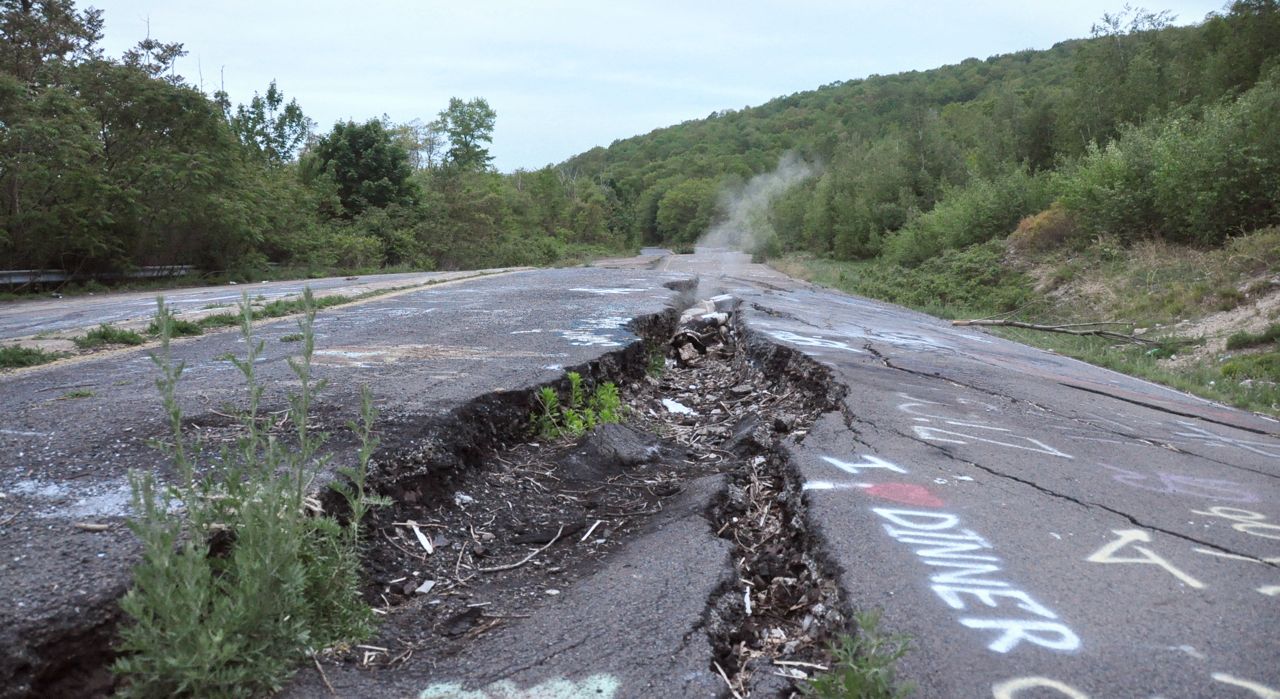A few weeks ago in SC200, we talked about the bacteria growing in Centralia, Pennsylvania. For anyone who does not know what Centralia is, it is a small abandoned town in Mid-Eastern Pennsylvania. Centralia is known for its coal mines that caught on fire in 1962 and has been burning since. The fires spread through tunnels that miners dug in the years before the fire occurred making them nearly impossible to extinguish. The government evacuated the town and it has since been abandoned except for a handful of residents, but after their deaths their homes will become the government’s property and they will be destroyed. This topic stuck out to me when we discussed it in class because I live about an hour north of Centralia and I have been there multiple times with my friends from home. When I visited with my friends, we did not see smoke. Residents believe this is because the fire is getting smaller or even moving somewhere else underground.
 Among teenagers and tourists, scientists have also shown an interest in Centralia. They are studying the bacteria and how it is evolving. This article talks about Ashley Shade , and the studies she is conducting at Centralia. She has been studying the temperature of the soil. She took samples from soil that was touched by the fire and soil that wasn’t. They also took soil samples from 8-inches underground. They then began running tests to see what microbes were currently in the soil.
Among teenagers and tourists, scientists have also shown an interest in Centralia. They are studying the bacteria and how it is evolving. This article talks about Ashley Shade , and the studies she is conducting at Centralia. She has been studying the temperature of the soil. She took samples from soil that was touched by the fire and soil that wasn’t. They also took soil samples from 8-inches underground. They then began running tests to see what microbes were currently in the soil.
Ashley Shade was still confused about where the different microbes originated from. Her hypothesis is that some of the microbes she discovered like heat. Meaning they are in a way “asleep” until their surroundings become hot. Soil microbiologist, Peter Hartel, talks about what happens when a banana peel is put into a compost pile. When the compost becomes hot, thermophiles begin to break down molecules that certain bacteria types can not(specifically the types of bacteria that like a colder atmosphere). He then states that this explains why colder compost piles are not as sufficient as warmer ones.
 Biochemist Madan Kharel visited a similar coal mine in Kentucky that has also caught fire. She went there to conduct similar study to that of Ashley Shade. She searched for bacteria to create new antibiotics and drugs for cancer research.
Biochemist Madan Kharel visited a similar coal mine in Kentucky that has also caught fire. She went there to conduct similar study to that of Ashley Shade. She searched for bacteria to create new antibiotics and drugs for cancer research.
Susquehanna University also collected samples of bacteria from Centralia. They separated the bacteria from the area where the fire occurred and analyzed it to determine the different types of bacteria and their performance in the environment they were discovered in. The students discovered evidence that proposes the possibility of thermophilic, thermotolerant nitrifying, and sulfur metabolizing bacteria living in the area. The students plan to continue to check on the bacteria at Centralia and monitor their changes as time goes on and as the fire spreads.
I think it is really interesting how a fire in an underground mine could influence the growth of new bacteria that could create new antibiotics and even anti-cancer medications. The fire is expected to burn for at least another 200 years which could result in even more different types of bacteria growth.
